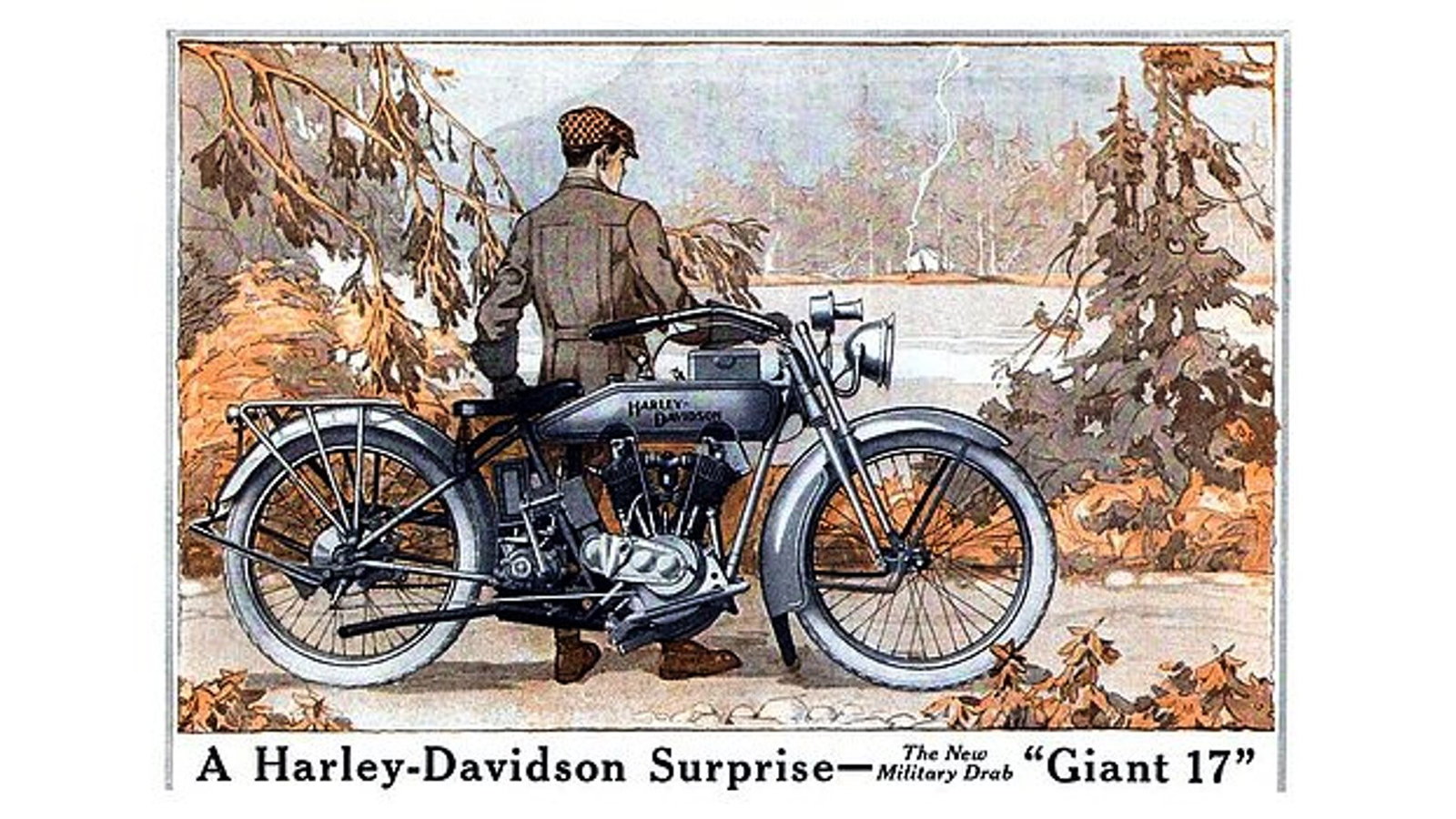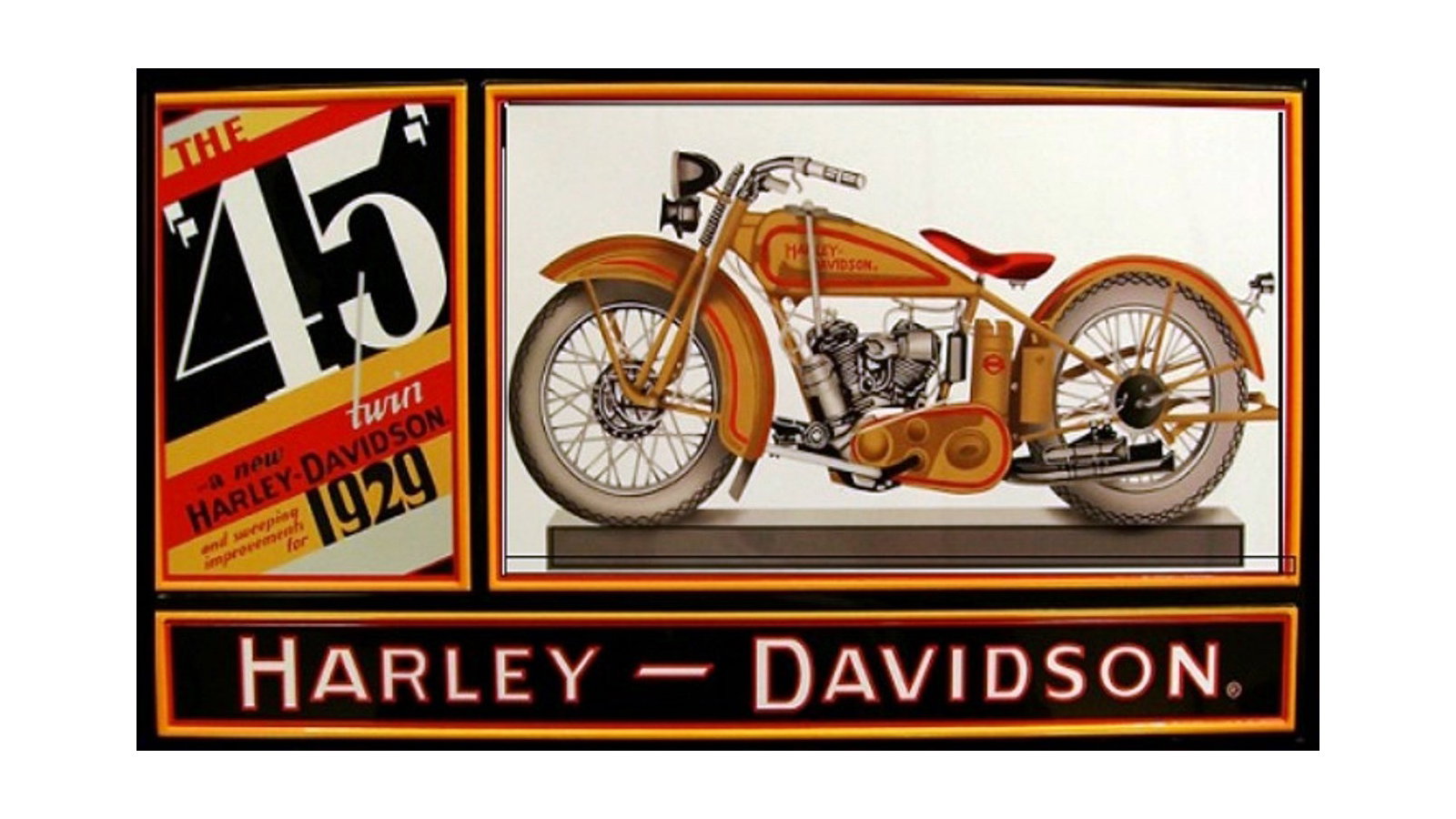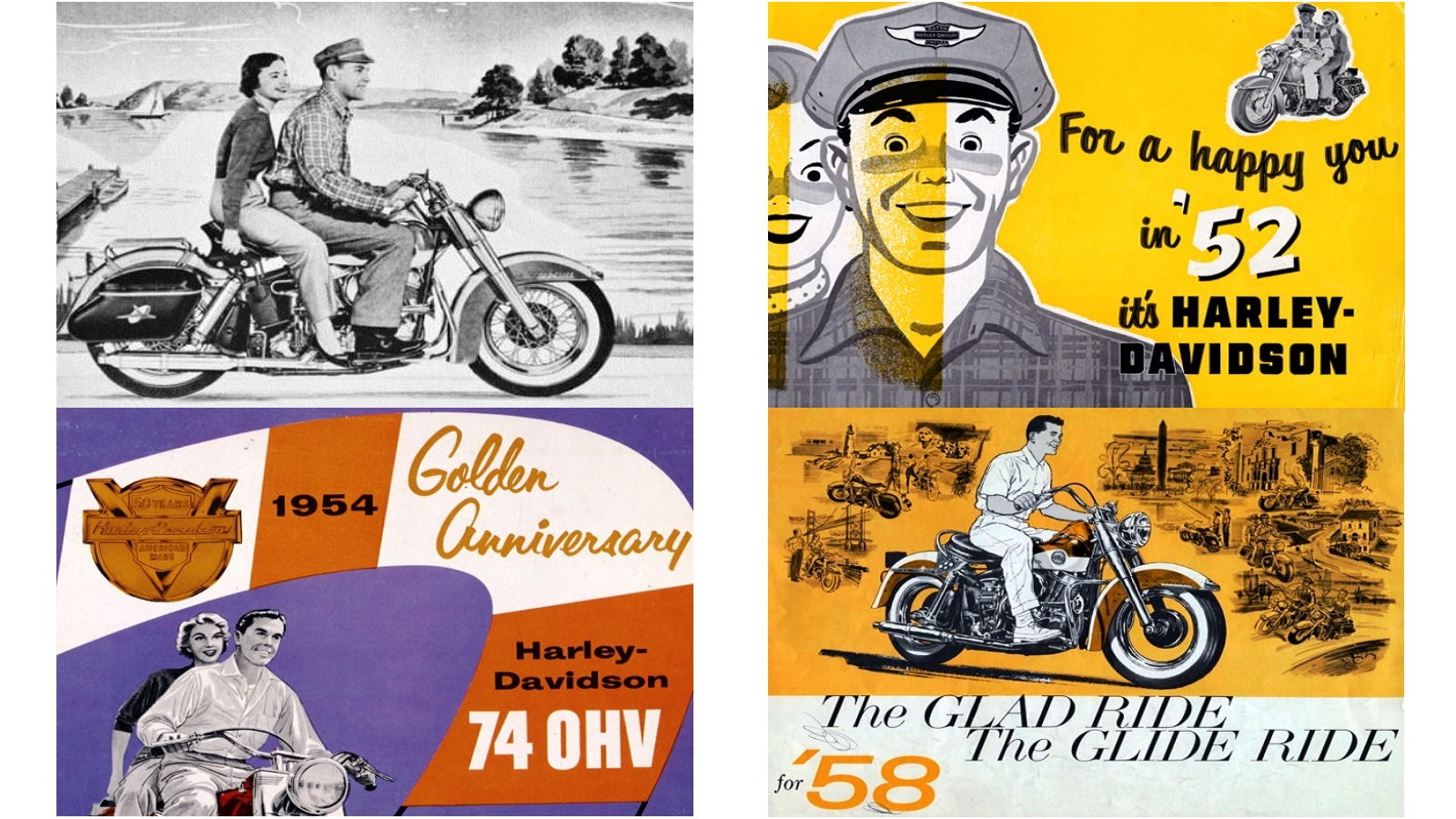14 Great Old Harley-Davidson Ads
Over the years Harley-Davidson has played with a lot of different brand images before becoming the outlaw-style, badass it is today. Lets look back at a bunch from the turn of the last century 'til the birth of the modern brand.




























1. The Greatest Roadster
This excerpt from a full page newspaper ad, which ran in major cites around the country, proclaims the Harley-Davidson to be the greatest roadster ever built. It is hard to say now just how much of the ad is true and how much is embellishment, like having been making bikes for over eight years (in 1910), or having the largest motorcycle factory in the world. Looking back, it is safe to say that the Harleys of this era must have been screwed together well and did have a reputation for being durable, even when used for rural postal delivery. The whole ad (and other motorcycle ads of the era) can be seen here.
2. Harley Goes to War
Ten years later, Harley had a V-twin with more than twice the power, and they were cranking them out for the war effort. Radio technology was only in its infancy during WWI, and even wired telephones were not all that common. In order to get messages long distance, you either had to string telegraph wires, or send a man on a motorcycle from one camp to the other. Harleys also got pressed into duty hooked to sidecars, mounted with machine guns, and sent out on missions in terrain no car could cover.
3. Birth of the 45
This one is kind of cheating, because it is a sign and not an ad, but it is a very art deco style announcement of the new 45 cubic-inch Harley-Davidson for 1929. This smaller, flathead motor would stick around for years, get used throughout WWII, and even stay in the Servicar until the very end decades later.
4. Wonderful New Harley-Davidsons for 1931
This full line ad touts all the new innovations for 1931, and there were a lot. The flathead motor had replaced the pocket valve design big twin the previous year, but there were improvements across the board, and a new 500cc single. These depression-era flathead Harleys were as modern as anything anyone else made in the era.
5. An American Bike in Asia
During the Great Depression, Harley-Davidson licensed its tooling, and Rikuo in Japan began to produce bikes for the Asian market. Beginning in 1929 Harley-Davidson bikes began rolling off the line in Japan and continued throughout the war (much to the dismay of the motor company) and until the late 1950s with few changes. The Japanese army was mounted on recognizable copies of Harley-Davidson motorcycles, and some say learning how to produce them was a huge help with modernizing their industry for the coming war. Later, in the 1950s, Rikuo was sold to Showa, who now produce shocks and forks for modern Harley-Davidsons.
6. Happy Days and the Knucklehead are Here
Around the mid-1930s, things were looking up. The New Deal seemed to be working and, even though jobs were still scarce, optimism was back; happy days were here again. For Harley fans the big thing to celebrate was the new OHV motor, now called the Knucklehead. Things were looking up, unless you were looking at Europe, where Hitler was already gearing up for war.
7. The WWII Years
Motorcycles are more maneuverable than cars or trucks, not to mention better on a variety of terrain, so Harley did well in WWI and WWII. Men introduced to the bikes during the war came home and wanted to ride them here as well. The motor pool training many soldiers got from the army also meant they were keen on modifying them and making them faster, too. The entire generation of veterans returning from the war had just been through hell, and they were determined to enjoy the rest of their lives. As bad as war is, many also came home missing the adrenaline rush that comes from danger, and riding a bike solved that problem for many.
8. Harley Gets a Little Hummer
After the war, Harley-Davidson was given the designs and rights to the little 125cc 2-stroke motor formerly produced by DKW in Germany. The motor company wasted little time building a mini version of their big bikes powered by this little motor, later in 165cc versions as well. Though only officially called the Hummer from 1955 to 1959, the name has stuck and now refers to all of them. These bikes were popular with young buyers and cheapskates alike, due to their ease of operation and fuel economy, the same folks who years later flocked to Honda. If Harley had kept improving their little bikes back then, the Japanese motorcycle invasion of the 1960s may have gone very differently.
9. Harley Makes a Scooter
If you don't think Harley could have taken the Japanese head on in the 1950s when Honda first appeared, you need to learn some history. Between the little Hummers and the Topper scooter, based on the same motor, there was a 50/50 chance the nicest people you meet would be riding a Harley. Unfortunately, Honda was selling their bikes through non-intimidating displays at hardware stores, barbershops and sporting goods stores, while your local Harley-Davidson dealer was greasy, dirty, and staffed by gruff guys used to selling to the faithful. Some things never change.
10. Harley-Davidson: The Bike for Squares
By the time the 1950s rolled around, the big twin Harleys were seen as boring touring bikes for squares. Sure, the new Sportster was quick and light and would go head-to-head with the new British bikes flooding the market, but the Hydra-Glide, and new Duo-Glide were cushy Cadillacs in comparison. The outlaw clubs still favored the big twin Harley FL, but Harley would rather they didn't.
11. Racing Improves the Breed
The big twins may have been for squares and outlaws, but the Sportster, and the race bikes based on it, were for speed freaks and hardcore racers. It is hard to imagine if you were born in the 1960s or later, but there was a time when the Harley XL was the fastest stock bike you could buy.
12. The Out-Performers?
It is amazing Harley could get away with this ad, seeing as how the 1969 Honda CB750 was the bike to beat in 1969 and everyone knew it. If anything, 1969 was the last hurrah for quite a while for Harley-Davidson being considered one of the fastest bikes on the road. These were the start of dark days for the motor company, especially considering that this was when AMF took control.
13. The Super Glide
The Super Glide was the first indication that there was still life in the old fuddy-duddy AMF Harley-Davidson company. Willie G. Davidson, the designer, combined the most powerful big twin motor with a lighter weight frame and the front end from the Sportster, then gave it the most American of paint jobs. The boat tail looks funny now, but at the time it was a modern style. This was the first attempt to build a factory bike more like the stripped down bikes the outlaws preferred, and it was a big hit.
14. Classic Heritage and Tradition
Not sure if 1976 was when the idea of giving up the rat race and selling HD bikes for their classic style, heritage and tradition first appeared, but I wouldn't be surprised. Considering that the FLH touring bike was a dead ringer for the same bike from 20 years previous, it only made sense. There is no denying that even the AMF-era bikes still look great with the classic shapes and forms you only get from a Harley-Davidson. The folks at the motor company hadn't given up on making new bikes, but they had resigned themselves to not making any that looked too new from then on out.
For more information and maintenance guides, browse our How-to articles at http://hdforums.com/how-tos!

